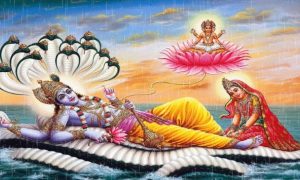New Delhi | Jagran Lifestyle Desk: After three decades, Mozambique reported its first case of wild poliovirus Type 1 this week. The country had reported its last case of wild poliovirus Type 1 in 1992 and the second imported case of this disease in Southern Africa this year. Earlier this year, an outbreak of wild poliovirus type 1 was reported in Malawi as well. According to the World Health Organisation (WHO), in August 2020, Africa was declared free of indigenous wild polio. This disease is endemic only in Pakistan and Afghanistan.
What is Polio?
According to WHO, polio is a highly infectious disease, which is transmitted by person-to-person through the faecal-oral route or by contaminated water or food. There are three types of wild poliovirus, that is, WPV1, WPV2 and WPV3. WPV2 and WPV3 have been eradicated, and WPV1 is only endemic in Pakistan and Afghanistan, but the disease has been detected in South Africa as well.
According to the US Centers for Disease Control and Prevention (CDC), in September 2015, WPV2 was declared eradicated and WPV3 was declared eradicated in October 2019.
Symptoms of Polio:
According to Disease Control and Prevention (CDC), most people suffering from polio do not feel sick. There are some minor symptoms which include fever, tiredness, nausea, headache, nasal congestion, sore throat, cough, stiffness in the neck and back, and pain in the arms and legs. But there are some rare cases in which polio can cause permanent loss of muscle function (paralysis). The disease can be fatal if there is an infection of the brain or muscles used for breathing are paralyzed. Paralysis can lead to permanent disability and death and it is the most severe symptom associated with polio. The more serious symptoms include paresthesia (feeling of pins and needles in the legs) and meningitis (infection of the covering of the spinal cord and/or brain).
Prevention of Polio:
CDC also mentioned that the practices like good hand washing can help prevent in spreading of polio. People infected with the disease can spread the virus to others when they do not wash their hands well after defecating as this virus lives in the faeces of an infected person.
Polio vaccinations are used to protect against this disease. According to CDC, there are two polio vaccines used, that is, oral polio vaccine and inactivated poliovirus vaccine. The oral poliovirus vaccine (OPV) has been essential to the eradication effort of the polio disease. Inactivated poliovirus vaccine (IPV) protects people against all three types of poliovirus.
Polio in India:
According to WHO, India was declared polio-free in 2014. The last polio case was reported in West Bengal in 2011, and our country received ‘Polio-free certification’ from World Health Organization on March 27, 2014. In 1994, India launched the Pulse Polio Immunization Programme and during that India had around 60 per cent of the global polio cases.



































